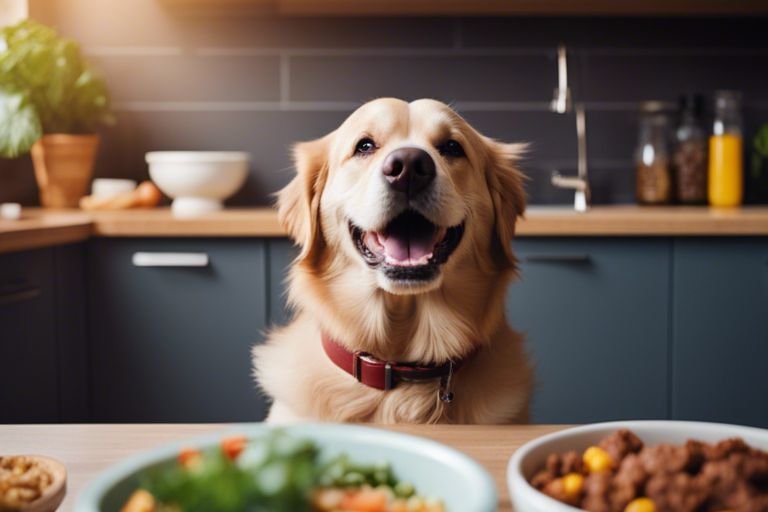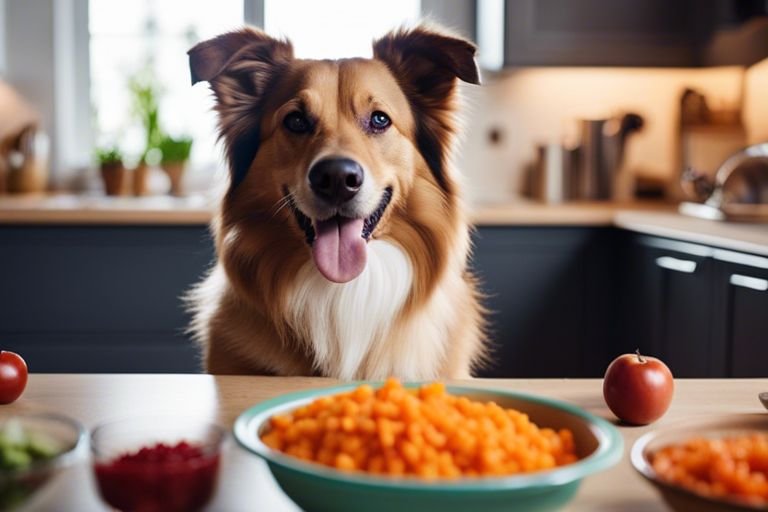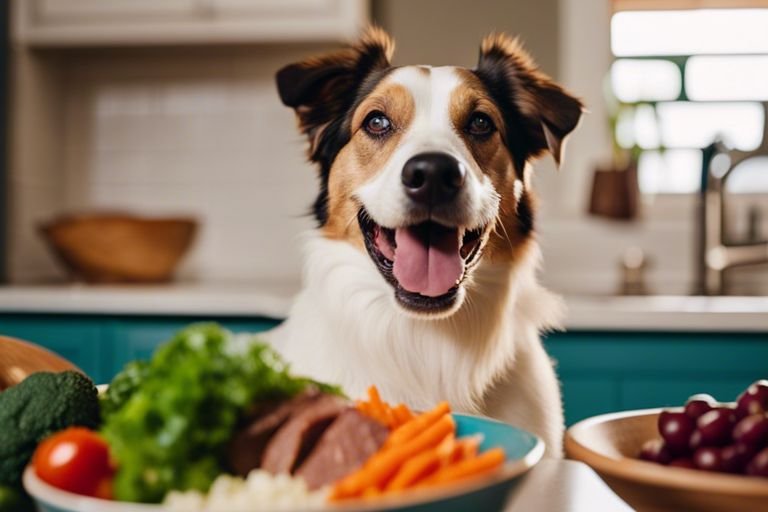Creating A DIY Allergy Friendly Dog Food Recipe Your Pup Will Devour

Just like humans, dogs can also suffer from food allergies which can affect their overall health and well-being. It’s vital to provide your furry friend with a nutritious and allergy friendly diet to keep them healthy and happy. In this blog post, we will guide you on how to create a DIY allergy friendly dog food recipe that your pup will not only devour but also benefit from. With the right ingredients and proper nutrition, you can ensure your dog’s diet is tailored to their specific needs, avoiding any potential allergic reactions.
Key Takeaways:
- Consult with a veterinarian: Before creating a DIY allergy friendly dog food recipe, it’s crucial to consult with a veterinarian to ensure it meets all of your pup’s nutritional needs.
- Identify food allergens: Carefully identify your dog’s food allergies to avoid using any ingredients that may trigger an allergic reaction.
- Choose high-quality ingredients: Opt for high-quality, easily digestible ingredients such as lean proteins, vegetables, and grains to create a balanced and nutritious meal for your pup.
- Monitor your dog’s health: Keep a close eye on your dog’s health and behavior after introducing the new DIY dog food recipe to ensure it agrees with their system and does not cause any adverse reactions.
- Gradually introduce the new food: Slowly transition your dog to the new DIY allergy 11O5V8_W
- friendly dog food recipe by mixing increasing amounts with their current food to prevent digestive upset.

Understanding Your Dog's Allergies
A crucial step in creating a DIY allergy friendly dog food recipe is understanding your dog’s allergies. Just like humans, dogs can have food sensitivities and allergies that can cause discomfort and health issues. By knowing what ingredients to avoid and recognizing the signs of food allergies, you can ensure your furry friend stays happy and healthy.
Common Allergens in Dog Food
Common allergens in dog food include ingredients such as wheat, soy, corn, dairy, and certain proteins like chicken and beef. These ingredients can trigger allergic reactions in some dogs, leading to symptoms like itching, gastrointestinal issues, and skin problems.
Signs and Symptoms of Food Allergies in Dogs
One common sign of food allergies in dogs is excessive itching, especially around the paws, ears, and rear end. Other symptoms may include vomiting, diarrhea, gas, and skin rashes. It’s imperative to consult your vet if you suspect your dog has food allergies to determine the best course of action.
Understanding the signs and symptoms of food allergies in dogs is crucial for creating a healthy diet for your pet. By paying attention to any changes in your dog’s behavior or health after meals, you can identify potential allergens and tailor their diet to suit their specific needs. Your veterinarian can also conduct allergy tests to pinpoint the exact triggers and help you develop a suitable allergy friendly dog food recipe.

Key Ingredients for Allergy Friendly Dog Food
Safe Protein Sources
On the quest for creating an allergy friendly dog food recipe, it is crucial to select safe protein sources. Opt for lean meats like turkey, chicken, or fish as they are less likely to trigger allergies in dogs compared to red meats. Additionally, plant-based proteins such as lentils and chickpeas can also be excellent alternatives for pups with protein sensitivities.
Beneficial Carbohydrates and Fats
Food rich in beneficial carbohydrates like sweet potatoes, quinoa, and oats can provide crucial energy for your furry friend. Healthy fats from sources like salmon, coconut oil, and flaxseed can help maintain your dog’s skin and coat health. These ingredients can be easily digestible and beneficial for dogs with allergies to common grains.
For instance, incorporating small amounts of fruits and vegetables like blueberries, carrots, and spinach into your dog’s diet can offer additional vitamins, minerals, and antioxidants for overall well-being.
Essential Vitamins and Minerals
Carbohydrates like brown rice and barley can serve as excellent sources of crucial vitamins and minerals for your dog’s diet. These complex carbohydrates can provide a steady release of energy and support digestive health. Including a variety of vegetables like broccoli, zucchini, and peas can offer a spectrum of vitamins such as vitamin C, K, and minerals like potassium and manganese.
Sources
When sourcing ingredients for your DIY allergy friendly dog food recipe, always opt for high-quality ingredients free of additives, fillers, and artificial flavors. Consider consulting with a veterinarian or pet nutritionist to ensure your pup is receiving a balanced diet tailored to their specific dietary needs.
DIY Recipe Development
Balancing Macronutrients
One crucial aspect of creating a DIY allergy friendly dog food recipe is balancing macronutrients. Dogs require a specific balance of protein, carbohydrates, and fats for optimal health. Consult with a veterinarian or pet nutritionist to ensure your recipe meets your dog’s nutritional needs.
Flavor and Palatability
With dogs being notoriously picky eaters, ensuring your DIY allergy friendly dog food is both flavorful and palatable is key. Experiment with different protein sources, vegetables, and grains to create a recipe your pup will love.
Another tip to enhance flavor and palatability is to incorporate pet-safe herbs and spices into your dog’s food. Just like humans, dogs appreciate a variety of flavors, and herbs like parsley, basil, or turmeric can not only add taste but also provide additional health benefits.

Feeding and Monitoring
Keep your furry friend healthy and happy by preparing homemade allergy friendly dog food. For inspiration, check out 3 Homemade Allergy Dog Food Recipes to get started on delicious meals for your pup.
Transitioning to Homemade Food
Homemade dog food can be a great option if your pup has allergies or sensitivities. When transitioning to homemade food, do it gradually by mixing it with their current food to avoid digestive upsets.
Monitoring Your Dog's Response
On the homemade diet, it’s crucial to monitor your dog’s response closely. Look out for any changes in their skin, coat, digestion, and overall energy levels. If you notice any negative changes, consult your vet to adjust the recipe accordingly.
This helps ensure that your pup is getting all the necessary nutrients and is thriving on their new homemade allergy friendly diet.
Related Article: How-To Choose The Best Grain Free Puppy Food For Your Furry Friend
To wrap up
Drawing together a DIY allergy friendly dog food recipe for your furry friend can be a rewarding experience that benefits their health and overall well-being. By carefully selecting ingredients based on your dog’s specific dietary needs and preferences, you can ensure that they are getting the nutrition they need while avoiding potential allergens. Be sure to consult with your veterinarian before making any drastic changes to your dog’s diet, and always monitor their reaction to new ingredients. With a little effort and creativity, you can create a delicious and nutritious meal that your pup will devour with delight.
FAQ
Q: Why should I consider creating a DIY allergy friendly dog food recipe for my pup?
A: Creating a DIY allergy friendly dog food recipe allows you to control the ingredients and ensure your pup is not exposed to any allergens. It can also help improve your dog’s overall health and well-being.
Q: What are common allergens in commercial dog food that I should avoid?
A: Common allergens in commercial dog food include wheat, soy, corn, and artificial additives. It’s important to read ingredient labels carefully and avoid these ingredients if your dog has allergies.
Q: How can I determine if my dog has food allergies?
A: Common signs of food allergies in dogs include itching, scratching, hair loss, ear infections, and digestive issues. Consult your veterinarian for proper diagnosis and guidance on creating an allergy friendly diet.
Q: What are some allergy-friendly ingredients I can use in DIY dog food recipes?
A: Allergy-friendly ingredients for dogs include lean proteins like turkey, salmon, and duck, as well as carbohydrates like sweet potatoes, brown rice, and quinoa. Fruits and vegetables such as blueberries, carrots, and peas can also be included.
Q: How should I introduce a new DIY dog food recipe to my pup?
A: When introducing a new DIY dog food recipe, gradually transition your pup by mixing small amounts of the new food with their current food over a period of 7-10 days. Monitor your dog for any signs of allergies or digestive issues during this transition period.




